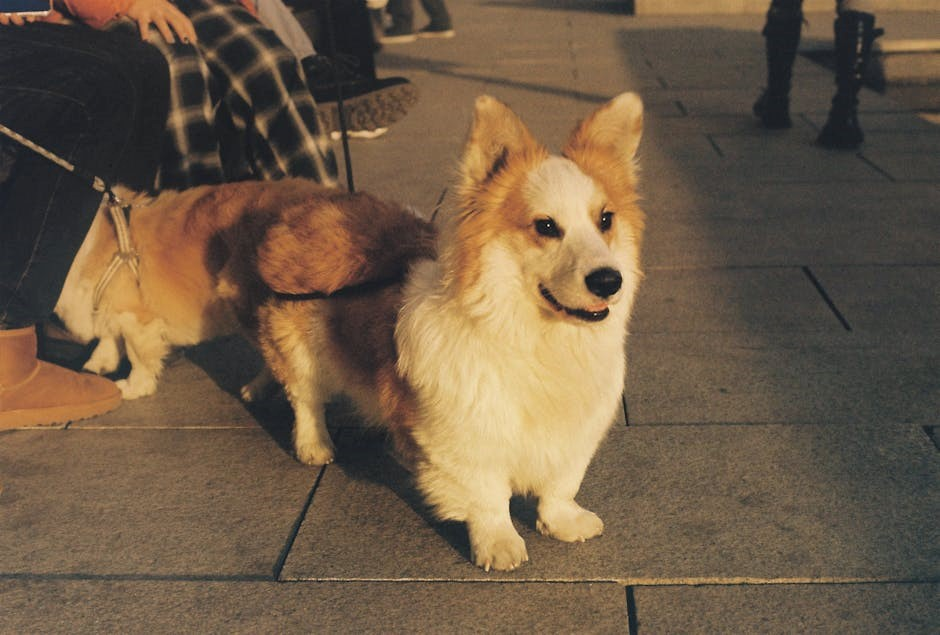Discover the convenience of free printable dog coat patterns in PDF format, offering customizable designs, cost-effective solutions, and eco-friendly options for pet owners to create cozy, tailored garments.
Overview of Free Printable Dog Coat Patterns
Free printable dog coat patterns in PDF format offer a convenient and cost-effective way to create custom garments for your pet. These patterns are widely available online, catering to various skill levels and breeds. Many designs are customizable, allowing you to choose fabrics, sizes, and styles that suit your dog’s needs. Whether you’re a novice sewer or an experienced crafter, these patterns provide clear instructions and measurements for a professional finish. They often include multiple sizes, ensuring a perfect fit for dogs of all shapes and sizes. Additionally, using sustainable or recycled fabrics can make the project eco-friendly. This approach not only saves money but also allows for personalization, ensuring your dog’s coat is both functional and stylish. With minimal materials and tools required, these patterns are an excellent choice for DIY enthusiasts looking to create something practical and thoughtful for their pets.
Importance of Using Printable PDF Patterns
Printable PDF patterns for dog coats offer unmatched convenience and accessibility. They are often free, easily downloadable, and customizable to suit your dog’s specific needs. These patterns provide clear measurements and instructions, ensuring a professional finish. They also allow for eco-friendly practices by using recycled or sustainable fabrics. Additionally, PDF patterns enable cost savings compared to store-bought coats. They cater to various skill levels, making DIY projects accessible to everyone. With adjustable sizes and styles, these patterns ensure a perfect fit, empowering you to create functional, stylish, and personalized garments for your pet.
Benefits of DIY Dog Coats
Creating a DIY dog coat offers numerous advantages, including personalization to suit your pet’s unique style and needs. It allows for cost-effective solutions, as materials can often be sourced affordably or repurposed from existing fabrics. DIY coats also promote eco-friendly practices by reducing waste and encouraging sustainable crafting. Moreover, homemade coats provide a perfect fit tailored to your dog’s measurements, enhancing comfort and functionality. Customization options enable you to choose colors, patterns, and embellishments, ensuring a one-of-a-kind garment. This creative process also fosters a sense of accomplishment and bonding with your pet.
Materials and Tools Needed
Essential materials include durable fabric, measuring tape, scissors, and thread. Tools like sewing machines, needles, and iron are also required for precise cutting and stitching.
Fabric Requirements for Dog Coats
Choose durable, breathable fabrics like fleece, cotton, or waterproof materials for dog coats. Consider the season and your dog’s activity level when selecting fabric. For colder climates, opt for thick, insulating fabrics, while lightweight materials suit warmer weather. Stretchy fabrics ensure a comfortable fit, especially for active dogs. Always pre-wash fabric to ensure shrinkage is accounted for; Eco-conscious options include recycled or sustainable fabrics. Select colors and patterns that match your dog’s personality. Proper fabric choice ensures comfort, durability, and style for your DIY dog coat.
Measuring Your Dog for the Perfect Fit
Accurate measurements are crucial for a well-fitting dog coat. Measure your dog’s length from the base of the neck to the base of the tail, chest girth around the widest part, and neck circumference. Use a flexible tape measure for precise results. Ensure your dog stands still and relaxed during measurement. Double-check measurements to avoid errors. Patterns often include size charts to match your dog’s measurements. For growing dogs, remeasure periodically to ensure the best fit. Proper sizing ensures comfort and mobility, making the coat both functional and stylish for your pet.
Essential Sewing Tools for the Project
To successfully create a dog coat using a free printable PDF pattern, you’ll need a few essential sewing tools. A sewing machine is a must for stitching fabric efficiently, while sharp scissors or rotary cutters are ideal for cutting fabric accurately. Pins and a tape measure are crucial for aligning patterns and ensuring proper fit. A seam ripper is handy for correcting mistakes, and ironing tools help in pressing seams for a professional finish. Additionally, fabric shears and a cutting mat can aid in precise cutting. Having these tools ready ensures a smooth and enjoyable sewing experience.
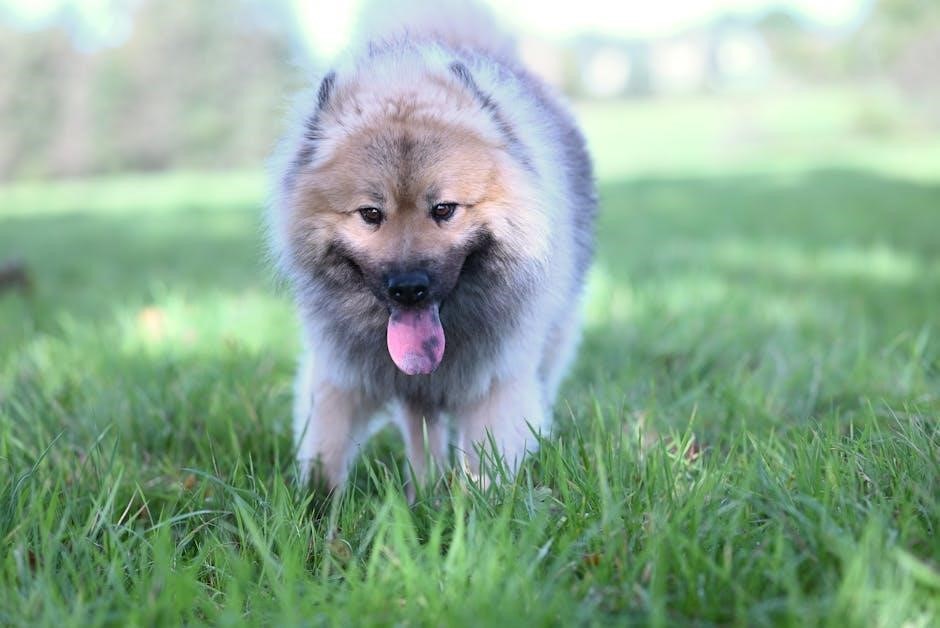
Step-by-Step Instructions
Begin by downloading and printing the free PDF pattern, then cut fabric pieces according to the template. Sew the coat together, ensuring accurate seams. Add fasteners and finish edges for a polished look.
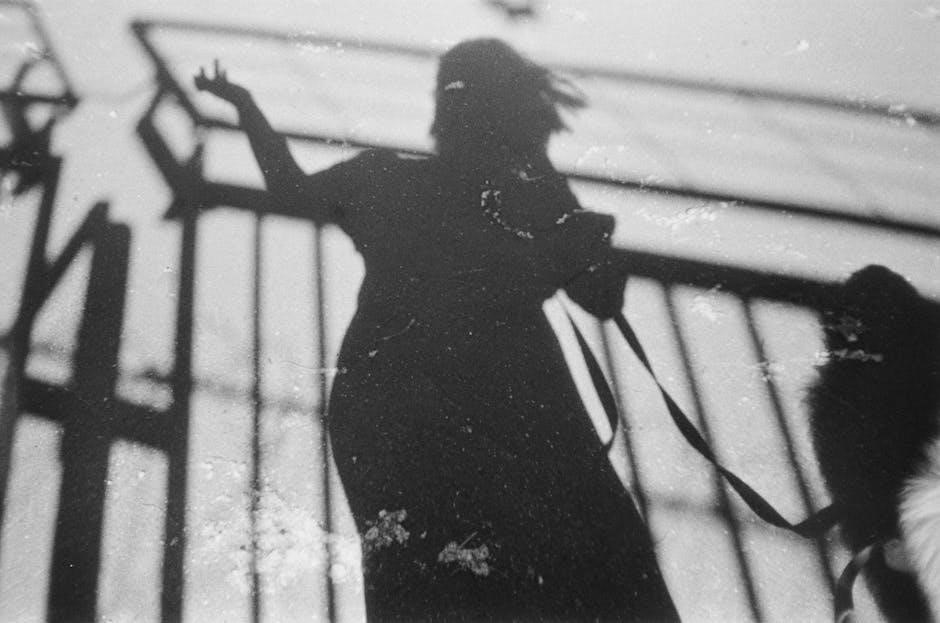
Downloading and Printing the Pattern
Start by downloading the free PDF pattern from trusted sources like Pinterest or crafting blogs. Ensure your printer is set to standard paper size, typically A4 or letter. Print the pattern at 100% scale to maintain accuracy. Double-check the printer settings to avoid resizing issues. Once printed, review the pattern pieces and instructions carefully. Gather all necessary materials before proceeding to ensure a smooth sewing experience. This step sets the foundation for a successful DIY dog coat project.
Cutting Out the Fabric Pieces
Carefully lay the printed pattern on your fabric, ensuring proper alignment and grain lines. Use sharp scissors or a rotary cutter for precise cuts. Smooth wrinkles beforehand to avoid distortions. Cut accurately along the pattern edges, following all markings like notches or dots. Label each piece for easy identification later. Double-check the fabric layout to maximize material use and minimize waste. This step requires patience and attention to detail to ensure a professional finish. Proper cutting sets the stage for a well-made dog coat.
Sewing the Coat Together
Begin by sewing the main body pieces together, starting with the sides and back. Follow the pattern instructions for seam allowances. Use a 1/4-inch seam for most patterns, ensuring a snug fit. Attach the sleeves or armholes next, aligning notches carefully. Sew the neckline, leaving an opening for turning if necessary. Press seams flat to create a crisp finish. Topstitch for added durability and a polished look. Use a serger or zigzag stitch for raw edges to prevent fraying. This step transforms individual pieces into a cohesive, functional coat.
Adding Fasteners and Finishing Touches
Add fasteners like Velcro or buttons for easy on/off functionality. Sew or attach them securely at designated points. Reinforce stress areas with additional stitching. Trim excess seam allowances and turn right sides out. Topstitch edges for a professional finish. Optional embellishments include decorative stitching or appliques. Ensure all edges are neatly finished to prevent fraying. Install a D-ring for leash attachment if desired. Finalize by inspecting for loose threads or gaps. These steps ensure a durable, comfortable, and visually appealing coat tailored to your dog’s needs and style.
Sizing and Customization
Free printable dog coat patterns offer adjustable sizing charts and customization options, allowing you to tailor the fit and style to your dog’s unique needs and preferences.
Understanding the Size Chart
Free printable dog coat patterns often include detailed size charts to ensure a perfect fit. These charts typically outline measurements for length, chest circumference, and neck size. Accurate measurements are crucial to avoid sizing issues. Patterns may cater to various breeds and body types, offering a range of sizes from small to extra-large. Understanding the size chart allows you to select the right template for your dog’s specific dimensions. Always double-check measurements before cutting fabric to ensure comfort and proper fit. This step is essential for a successful DIY project.
Modifying the Pattern for Different Breeds
Free printable dog coat patterns can be adapted to suit various breeds and body types. For example, longer breeds may require extending the coat’s length, while stockier dogs need adjustments for a broader chest. Some patterns offer breed-specific modifications, ensuring a tailored fit. Online resources often provide tips for altering patterns, such as adjusting sleeve lengths or adding gussets for mobility. Seam rippers and adjustable fasteners can help fine-tune the fit. This flexibility makes DIY dog coats versatile for all shapes and sizes, ensuring comfort and style for every furry friend.
Customizing the Coat with Embellishments
Personalize your dog’s coat with creative embellishments like buttons, patches, or embroidery. Reflective strips can enhance visibility, while decorative stitching adds style. Appliques featuring fun designs or personalized names make the coat unique. Iron-on transfers or fabric paint allow for custom motifs, giving your dog a one-of-a-kind look. These embellishments not only add visual appeal but also provide functionality, ensuring your dog stands out while staying warm and comfortable. Explore various DIY techniques to tailor the coat to your pet’s personality, making it a standout piece in their wardrobe.
Benefits of Using a Free Printable Pattern
Free printable patterns offer cost savings, customization options, and eco-friendly solutions, allowing you to create a tailored, sustainable dog coat while minimizing waste and expenses.
Cost-Effectiveness of DIY Projects
DIY dog coat projects using free printable patterns are budget-friendly, reducing costs significantly compared to store-bought options. By utilizing affordable fabrics and materials you likely already have, such as thread and needles, you can create a high-quality coat at a fraction of the price. Additionally, the ability to reuse or repurpose fabric scraps minimizes waste, further enhancing savings. This approach allows pet owners to invest in a durable, customizable coat without the retail markup, making it an economical choice for pet care.
Environmental Impact of Reusing Materials
DIY dog coat projects using free printable patterns promote sustainability by encouraging the reuse of materials. Repurposing fabric scraps, old clothes, or leftover textiles reduces waste and minimizes the environmental impact of producing new garments. By opting for eco-conscious fabrics like recycled or organic materials, you further reduce the carbon footprint. This approach aligns with green crafting practices, helping to conserve resources and decrease landfill contributions. Reusing materials not only benefits the planet but also fosters creativity and responsible consumption.
Personalization Options for Your Dog’s Coat
Free printable dog coat patterns offer endless opportunities for personalization, allowing you to tailor the design to your dog’s unique style and needs. Choose from various fabrics, colors, and textures to match your pet’s personality or your home decor. Embellishments like buttons, patches, or appliques can add a decorative touch. Additionally, you can modify patterns to accommodate specific breeds or preferences, such as adding a hood or adjusting sleeve lengths. This customization ensures a one-of-a-kind coat that reflects your dog’s individuality while providing comfort and functionality.
Common Mistakes to Avoid
Incorrect measurements, choosing the wrong fabric type, and rushing the sewing process are common errors that can lead to a poorly fitting or unprofessional-looking dog coat.
Incorrect Measurements and Sizing Issues
One of the most common mistakes when using free printable dog coat patterns is taking inaccurate measurements; Incorrect sizing can result in a coat that is either too tight or too loose, causing discomfort for your dog. To avoid this, ensure you measure your dog carefully, taking note of their length, girth, and neck circumference. Double-checking your measurements before cutting fabric is crucial. Using the wrong size chart or misinterpreting the pattern can also lead to sizing issues. Always refer to the specific sizing guide provided with the pattern to ensure the best fit for your dog.
Choosing the Wrong Fabric Type
Selecting the wrong fabric type is a common mistake that can lead to an uncomfortable or impractical dog coat. Fabrics that are too stretchy or too thin may not hold up well, while overly thick materials can make the coat heavy and difficult to move in. Avoid using delicate or prone-to-fray fabrics, as they may not withstand regular use. Opt for medium-weight, durable fabrics like cotton, fleece, or canvas, which provide comfort and longevity. Always check the pattern’s fabric recommendations to ensure the best results for your dog’s coat.
Rushing the Sewing Process
Rushing the sewing process can lead to poor-quality results, such as uneven seams, misaligned pieces, or incomplete stitching. This can result in a dog coat that doesn’t fit well or lacks durability. To avoid this, allocate ample time to carefully follow the pattern instructions and double-check each step. Taking your time ensures a professional finish and a comfortable, well-fitting coat for your dog. Hasty sewing often requires costly corrections, so patience and attention to detail are crucial for a successful DIY project.
Troubleshooting Tips
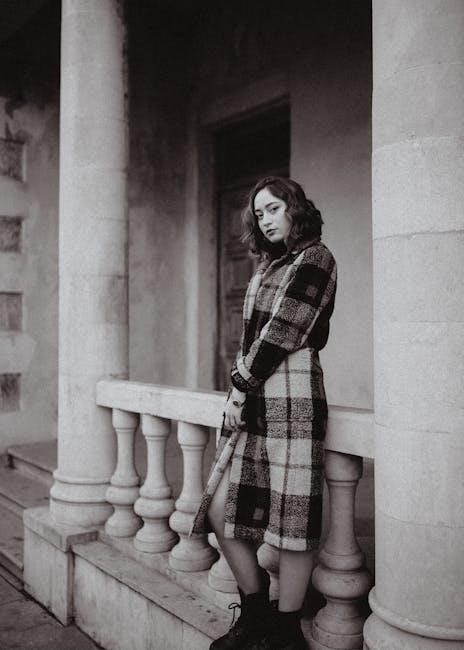
Troubleshooting Tips: Fix uneven seams, adjust the pattern, and prevent fabric fraying with these easy step-by-step solutions for a professional, polished dog coat finish.
Fixing Uneven Seams
Fixing uneven seams is a common challenge in sewing. Start by carefully removing the faulty stitches using a seam ripper. Realign the fabric edges and pin them securely. Sew the seam again slowly, ensuring even stitching. Press the seam with a hot iron to flatten it, and consider using steam for a crisp finish. If the issue persists, adjust your tension settings or try using a walking foot for better fabric control. This method ensures a professional finish and extends the coat’s durability.
Adjusting the Pattern for a Better Fit
Ensuring a perfect fit is crucial for your dog’s comfort. Start by comparing your dog’s measurements to the pattern’s size chart. Make adjustments to the pattern by lengthening or shortening seams, or altering the neckline and chest openings; If your dog has a unique shape, consider adding darts or gussets for a tailored look. Use scrap fabric to test changes before cutting the final pieces. Small modifications can make a big difference, ensuring the coat sits comfortably without restricting movement. This step guarantees a custom fit for your furry friend.
Dealing with Fabric Fraying
Fabric fraying can be a common issue when sewing dog coats; To prevent fraying, use zigzag scissors or pinking shears to cut fabric edges. Applying a small amount of fabric stabilizer or fray-check spray can also help. For knitted fabrics, zigzag stitching along raw edges before sewing is effective. If fraying occurs after sewing, carefully trim loose threads with sharp scissors. Using a serger for seam finishing is another excellent option. These techniques ensure a professional finish and extend the coat’s durability, keeping it looking great wash after wash.
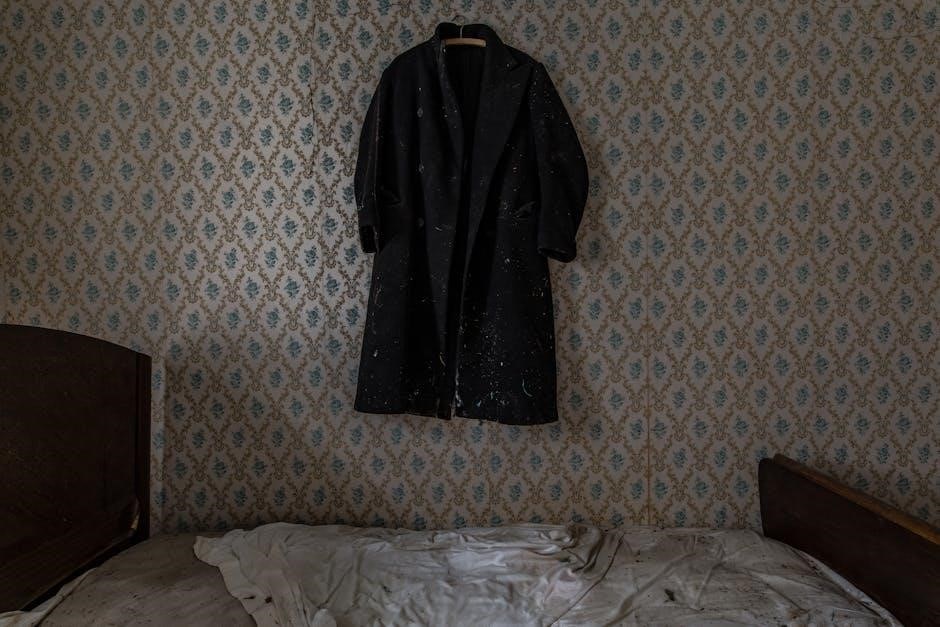
Resources and Patterns
Explore popular free printable dog coat patterns available online, offering customizable designs and user-friendly PDF formats. Websites like Pinterest provide inspiration and easy-to-download templates for DIY projects.
Best Websites for Free Dog Coat Patterns
Discover top websites offering free printable dog coat patterns in PDF format. Pinterest and crafting blogs provide a wide range of designs, from simple to intricate styles. Popular platforms like Craftsy and Etsy often feature user-friendly patterns for various skill levels. Websites such as ClosetCore and SewingPartsOnline offer customizable templates, ensuring a perfect fit for any breed. These resources cater to DIY enthusiasts, providing step-by-step guides and multiple size options. Explore these sites to find the ideal pattern for your furry friend, with options for different fabrics and seasonal designs.
Recommended PDF Patterns for Beginners
For those new to sewing, start with simple yet stylish free PDF patterns designed specifically for beginners. Websites like Pinterest and Etsy offer easy-to-follow templates with clear instructions. Patterns such as the ClosetCore Dog Coat are ideal, featuring adjustable sizes and straightforward construction. Many designs include step-by-step guides, ensuring a smooth sewing experience. These patterns are perfect for practicing measuring, cutting, and stitching while creating a cozy, custom-fit coat for your dog. They are also free, making them a great starting point for DIY enthusiasts.
Additional Tools and Accessories
Enhance your DIY dog coat project with essential tools and accessories. A measuring tape ensures accurate sizing, while a sewing kit with scissors, pins, and needles streamlines the process. Optional accessories like buttons, zippers, or decorative tags add functionality and style. Consider notions such as thread, interfacing, or batting for added durability or insulation. These extras help create a professional finish and personalize your dog’s coat, making it both functional and visually appealing. They are readily available at craft stores or online, providing everything needed for a polished result.
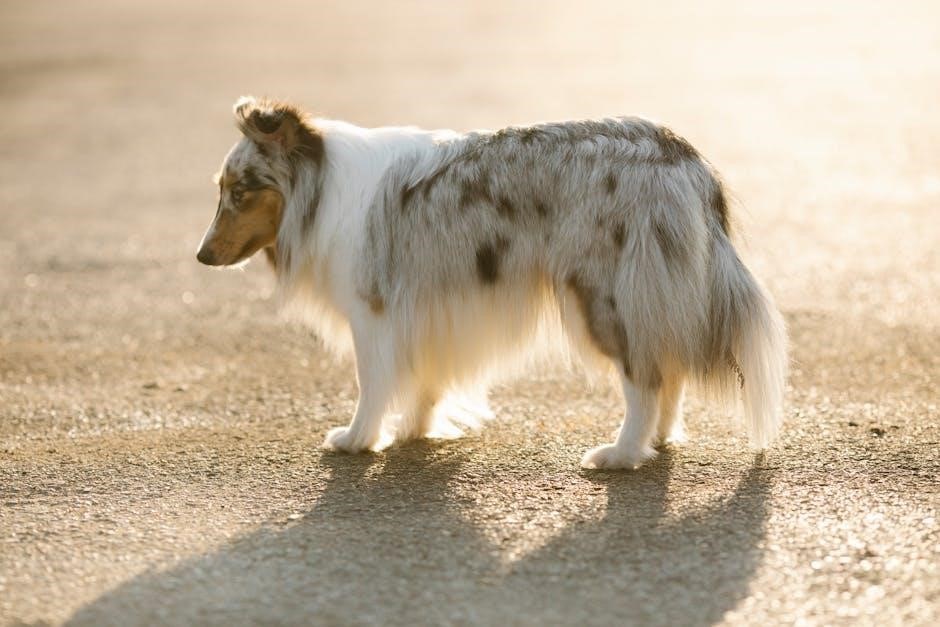
Sewing vs. Knitting Patterns
Sewing patterns use fabric, offering quick results, while knitting patterns involve yarn, providing versatility but requiring more time. Both methods cater to different skill levels and preferences.
Differences Between Sewing and Knitting
Sewing involves working with fabric and a sewing machine or needle, offering quick results and structured designs. Knitting uses yarn and needles, providing flexibility but requiring more time. Sewing patterns are ideal for beginners, while knitting suits those who enjoy creating intricate textures. Sewing is faster, with immediate results, whereas knitting allows for customizing fit and texture. Both methods are popular for dog coats, with sewing offering durability and knitting providing warmth and stretch. Each technique caters to different skill levels and preferences, making them equally valuable for crafting dog apparel.
Choosing the Right Technique for Your Skill Level
Beginners often find sewing more accessible, as it requires basic tools and yields quick results. Knitting, while rewarding, demands more patience and practice, especially for intricate patterns. Sewing is ideal for those new to DIY projects, offering structured guidance and immediate gratification. Knitting suits crafters with intermediate skills, allowing for customizable textures and fits. Assess your comfort with fabric vs. yarn and your time availability when deciding. Both methods enhance the DIY experience, ensuring a well-fitted, stylish coat for your dog, regardless of your skill level or preferred technique.
Time Efficiency of Each Method
Sewing typically offers faster results, making it ideal for quick DIY projects. Knitting, while creative, requires more time due to the intricate stitchwork and yarn handling. Sewing patterns often have fewer pieces, allowing for rapid assembly, whereas knitting patterns may demand more hours, especially for complex designs. The choice depends on your schedule and desired outcome. Sewing is perfect for those seeking efficiency, while knitting appeals to those who enjoy the meditative process and customizable textures. Both methods ensure a well-crafted coat, tailored to your dog’s needs. Time efficiency varies based on pattern complexity and skill level.
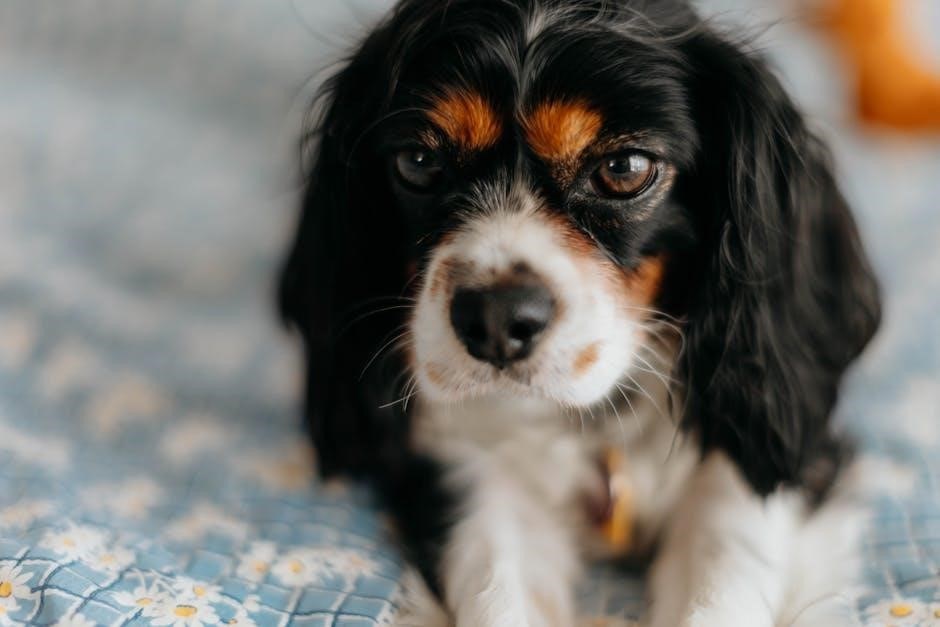
Time and Cost Efficiency
Using free printable dog coat patterns saves money on materials and minimizes waste, ensuring eco-friendly crafting while allowing quick and efficient project completion.
Estimating the Time Required for the Project
Estimating the time required for a DIY dog coat project involves considering your sewing skill level, the complexity of the pattern, and the time spent on customization. Beginners may take 4-6 hours, while experienced sewists can finish in 2-3 hours. Printing and cutting the pattern takes about 30 minutes, sewing the main structure 1-2 hours, and adding fasteners or embellishments another 30 minutes to an hour. Allow extra time for measuring your dog and adjusting the pattern for a perfect fit. Plan for interruptions and fabric preparation to ensure a smooth process.
Calculating the Cost of Materials
Calculating the cost of materials for a DIY dog coat involves summing the expenses for fabric, thread, fasteners, and any additional notions. Fabric costs vary based on type and quantity, typically ranging from $5 to $15 depending on the material quality and yardage required; Threads and zippers are generally inexpensive, costing around $2 to $5. Batting or lining, if used, adds another $3 to $5. Total estimated costs range from $10 to $25, depending on the pattern’s complexity and fabric choice. Always check for sales or discounts to reduce expenses and compare prices across suppliers for the best deals to stay within your budget.
Comparing DIY to Store-Bought Coats
DIY dog coats offer cost savings and customization, as free PDF patterns reduce initial expenses, allowing you to choose fabrics and styles tailored to your dog’s needs. Store-bought coats provide convenience but often lack personalization and may be pricier. DIY projects require time and effort but offer satisfaction in creating something custom. Store-bought options, while quick, may not fit as perfectly or match your dog’s unique style. Consider your time, budget, and desired outcome when deciding between DIY and store-bought coats for the best fit and value.

Eco-Friendly Aspects
Free printable dog coat patterns promote sustainability by utilizing recycled fabrics, minimizing waste, and encouraging eco-conscious crafting practices, making DIY coats an environmentally responsible choice.

Using Recycled or Sustainable Fabrics
Using recycled or sustainable fabrics for your dog coat is a great way to reduce environmental impact. Look for materials like organic cotton, hemp, or repurposed textiles. These options not only minimize waste but also support eco-conscious production methods. Many free PDF patterns specifically cater to sustainable practices, offering guides on how to upcycle old clothes or choose earth-friendly fabrics. By selecting these materials, you contribute to a greener planet while creating a stylish, functional coat for your pet. This approach aligns perfectly with modern crafting values, promoting both creativity and environmental stewardship.
Reducing Waste During the Pattern Cutting
Minimizing waste during pattern cutting is essential for eco-friendly crafting. Start by carefully planning your fabric layout to maximize material usage. Use scrap fabric for test cuts to avoid wasting your main material. Consider upcycling old clothes or linens, turning them into unique dog coats. Align pattern pieces efficiently to reduce excess fabric. Additionally, repurpose leftover scraps for smaller projects, like collars or accessories. By embracing these strategies, you can create a stylish dog coat while significantly reducing fabric waste and promoting sustainable crafting practices. Every small effort contributes to a more eco-conscious approach to sewing.
Eco-Conscious Crafting Practices
Eco-conscious crafting involves using sustainable materials and minimizing waste. Opt for recycled or organic fabrics, and repurpose old clothes to create dog coats. Choose patterns that minimize fabric scraps, and use leftover material for smaller projects. Consider energy-efficient sewing tools and eco-friendly dyes. By embracing these practices, you reduce your environmental footprint while creating a unique, durable coat for your dog. Eco-friendly crafting not only benefits the planet but also promotes creative and responsible sewing habits. Every small step toward sustainability makes a difference in the long run.
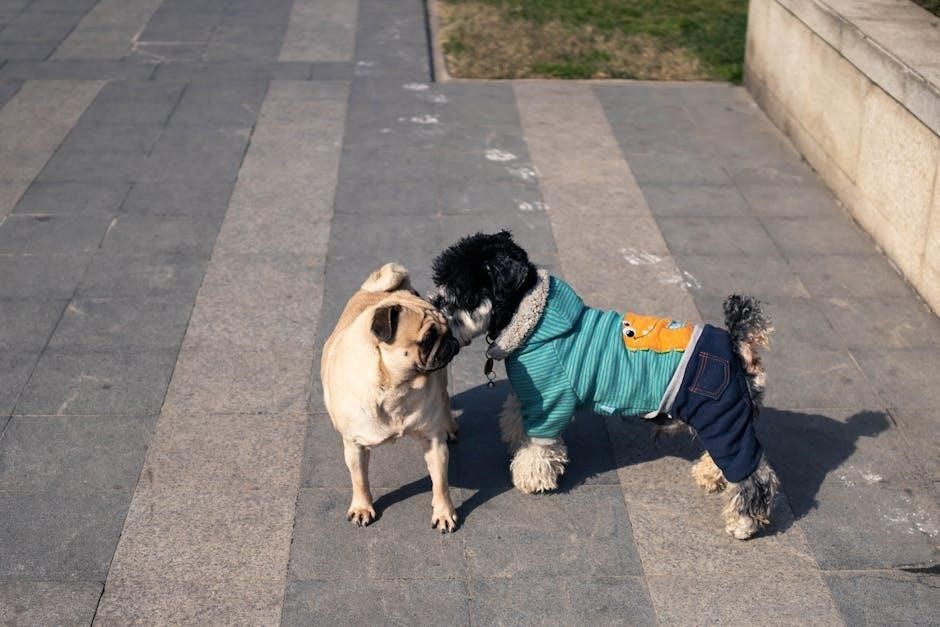
User Testimonials and Reviews
Users praise free printable dog coat patterns for their clarity, customization, and fun, resulting in cozy, well-fitting pet garments, creative outcomes, and satisfaction.
Success Stories from Dog Owners
Dog owners rave about free printable coat patterns, sharing heartwarming tales of their pets staying warm and stylish. Many praise the ease of customization, fitting various breeds perfectly. One owner modified the pattern for her Poodle, adding a stylish hood, while another created a matching coat for her Chihuahua using leftover fabric. The joy of crafting something cozy and personalized has strengthened the bond between pets and their owners, making these patterns a delightful DIY adventure for many. Users celebrate the creativity and practicality these designs bring to their furry friends.
Feedback on Popular Patterns
Users praise free printable dog coat patterns for their clarity and versatility. Many highlight the ClosetCoreDogCoat pattern, noting its ease of use and cozy results. Owners appreciate the ability to customize sizes and styles, ensuring a perfect fit for their pets. Feedback often mentions the joy of creating something warm and personalized, with some sharing modifications like adding hoods or using eco-friendly fabrics. The patterns’ adaptability to different breeds, from Poodles to Chihuahuas, has made them a favorite among crafty dog lovers seeking sustainable and fun DIY projects for their furry friends;
Improvements Suggested by Users
Users have suggested adding more detailed sizing charts for smaller breeds and clearer step-by-step instructions for beginners. Some recommend including optional features like hood attachments or adjustable straps for better fit. Others propose offering more fabric usage tips to minimize waste. A few users mention the desire for video tutorials to complement the PDF patterns. Additionally, there is interest in patterns designed for specific activities, like waterproof coats for rainy weather. These suggestions aim to enhance usability and versatility for a wider range of dogs and crafting skill levels.
